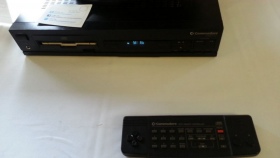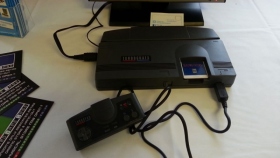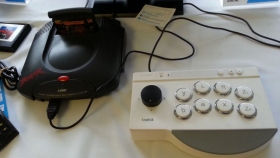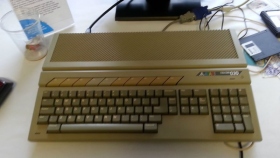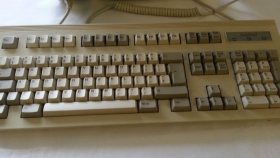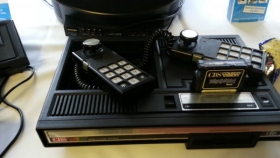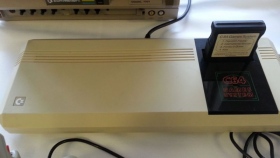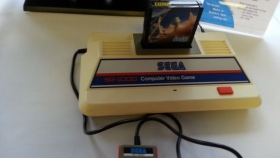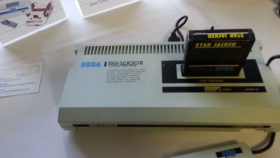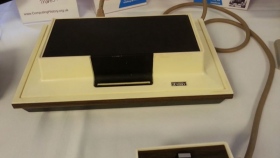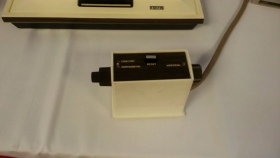The remaining computers and consoles were not on, but I was still snap-happy. The first two pictures are of the Commodore CDTV (1991), which didn’t stand for what you’d expect, but instead was the doesn’t-trip-off-your-tongue, “Commodore Dynamic Total Vision”. It comprised of an Amiga 500 in an over-sized CD player case, containing a single-speed CD-ROM drive. Targeted at the same marketed as the ill-fated Philips CD-i, it was marketed as an all-in-one home multimedia device… a bit like the Microsoft Xbox One? Hmm…
Then there’s a TurboGrafx-16 (1987) (aka a PC Engine) and an Atari 5200 (1982) – complete with trackball, which was a failure after the success of the 2600. You can’t blame them for trying a follow-up, but the 5200 had poor non-centring joysticks and the 2600 was just too dominant.
There’s another Atari Jaguar, this time with a Logic 3 controller, an Atari Falcon 030 (1992), Atari’s final computer product before moving back into consoles with the aforementioned Jaguar, and a computer which just didn’t compute for their fortunes.
And then, a rare oddity which I’d never even comprehended before – an Amstrad Mega PC (1993), an Amstrad computer with built-in Sega Megadrive!
Of the next four consoles, I’d only seen the first one before, and even owned one: The CBS Colecovision (1982) was a rival to the Atari 2600, and the console which I really wanted to own, but since I was only ten and not in full-time employment I couldn’t afford one. Later on, in 2001, I bought one from Ebay with a ColecoVision Atari Convertor (aka Expansion Module #1) and some games, but stored it in the cellar while having some work done on my house, during which there was a flash flood and it was ruined.
The other three are a Commodore 64 Games System (1990), a lot of the games being ports of C64 titles, while Terminator 2: Judgment Day was designed for the console, but was included on a cartridge that required the user to press a key to access the game, meaning it was unplayable – Whoops!; a Sega SG-1000 (1983) and a Sega SG-1000 II (1984), an updated version of the console, released the following year.
Then we have a Nintendo Family Computer, aka the Famicom (1983), which always looked cool but I never owned one; and a console which doesn’t look at all cool, but I’d have loved to have had a go on it, the original Magnavox Odyssey (1972), aka Odyssey 100.
Reviewer of movies, videogames and music since 1994. Aortic valve operation survivor from the same year. Running DVDfever.co.uk since 2000. Nobel Peace Prize winner 2021.


